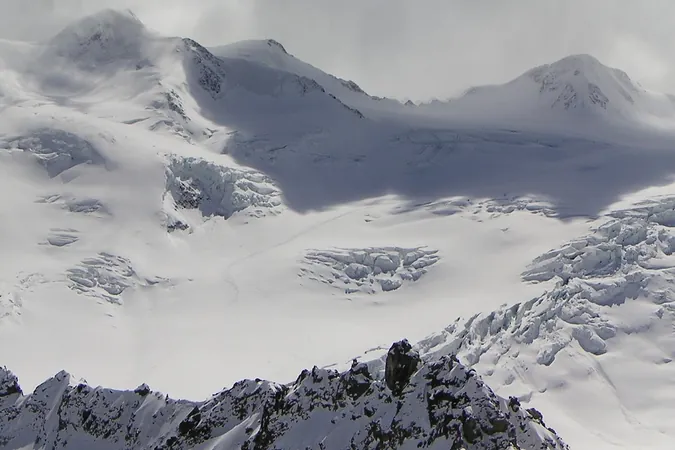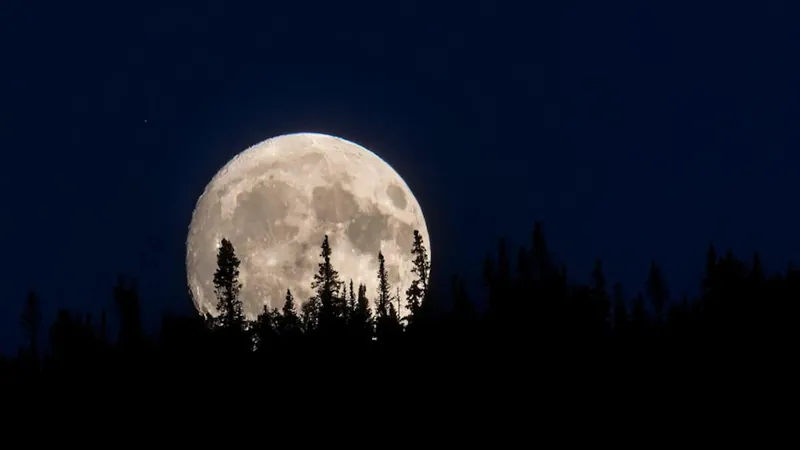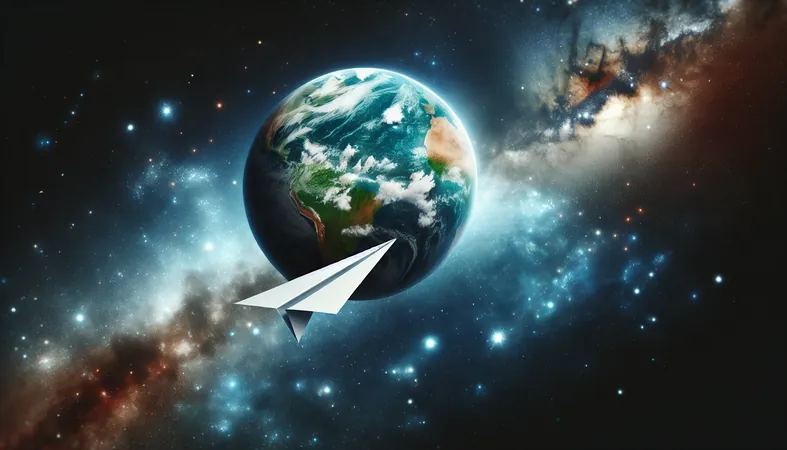
Unraveling the Ages of the Arctic: A Journey Through Time and Climate Change
2024-09-27
Author: Jacob
Introduction
The Arctic, often perceived through the lens of Cold War geopolitics, holds a more profound significance when we explore its geological and human history. A deeper dive into the ages of the Arctic — from the profound chill of the Snowball Earth epoch to our current era of climate change — reveals a intricate tapestry of interactions that shape not only the polar regions but also life on our planet.
Snowball Earth and Geological History
Around 600 million years ago, during the Snowball Earth period, the planet was an expansive icy landscape, in which life was virtually unrecognizable. This era is critical in understanding Arctic dynamics, as it indicates that the Arctic is not merely a fixed 'frozen' space; instead, it is a fluid environment that has undergone tremendous transformations throughout geological epochs.
The Last Glacial Maximum and Human Arrival
Fast forward to the Last Glacial Maximum (LGM) approximately 20,000 years ago, when humanity first ventured into the Arctic, marking the beginnings of a complex Arctic globalization. It is during these phases that we see the interplay of natural processes and human activity begin to take shape, setting the foundation for today's geopolitical and ecological realities.
Contrasting Views of the Arctic's Future
The discussions regarding the Arctic's future—whether we are embarking on a new 'Age of the Arctic,' as theorized by Oran Young, or witnessing the foretold 'End of the Arctic,' warned of by Ed Struzik—highlight contrasting perceptions shaped by our experiences and values. Young's optimism views the Arctic as a burgeoning region ripe for cooperation and exploration, while Struzik's perspective reflects the urgent need to address impending crises wrought by climate change.
A Hegelian Dialectic
The oscillation between these two visions suggests a Hegelian dialectic, one that bridges the ancient past of Snowball Earth with the looming uncertainties of our present Anthropocene. This interplay indicates that the Arctic's dynamism is not a modern phenomenon but a historical constant that has persisted over millions of years. Indeed, changes in climate are not merely crises, but rather part of an ongoing narrative of evolution, adaptation, and resilience.
Climate Change and Its Historical Context
Furthermore, when examining the influence of climate change on the Arctic today, it is crucial to recognize that these transformations are rooted in a much deeper chronology—one that connects contemporary challenges with earlier epochs of stark climate shifts. The effects of melting ice, rising sea levels, and shifting ecosystems are the latest chapter in this long story of climate dynamism.
Conclusion
As we navigate through the intricate histories of the Arctic — from its glaciated past to the warmth of our current climate — it becomes clear that understanding these ages offers a clearer perspective on our ecological responsibilities and geopolitical actions. The Arctic is a living barometer of planetary health, illustrating a delicate balance between human impact and the enduring forces that have shaped Earth's climate.
Final Thoughts
In the end, whether we are on the precipice of a new age or witnessing the twilight of an old one, the Arctic reminds us of our interconnectedness with the planet's history, urging us to act with foresight and responsibility. The choices we make today hold significant implications not just for the polar regions, but for the entirety of our global ecosystem. The Arctic's story is not just about ice and geopolitical tension; it's a compelling narrative that encompasses all life on Earth and our collective future. Would you dare to explore the depths of this extraordinary journey?









 Brasil (PT)
Brasil (PT)
 Canada (EN)
Canada (EN)
 Chile (ES)
Chile (ES)
 Česko (CS)
Česko (CS)
 대한민국 (KO)
대한민국 (KO)
 España (ES)
España (ES)
 France (FR)
France (FR)
 Hong Kong (EN)
Hong Kong (EN)
 Italia (IT)
Italia (IT)
 日本 (JA)
日本 (JA)
 Magyarország (HU)
Magyarország (HU)
 Norge (NO)
Norge (NO)
 Polska (PL)
Polska (PL)
 Schweiz (DE)
Schweiz (DE)
 Singapore (EN)
Singapore (EN)
 Sverige (SV)
Sverige (SV)
 Suomi (FI)
Suomi (FI)
 Türkiye (TR)
Türkiye (TR)
 الإمارات العربية المتحدة (AR)
الإمارات العربية المتحدة (AR)